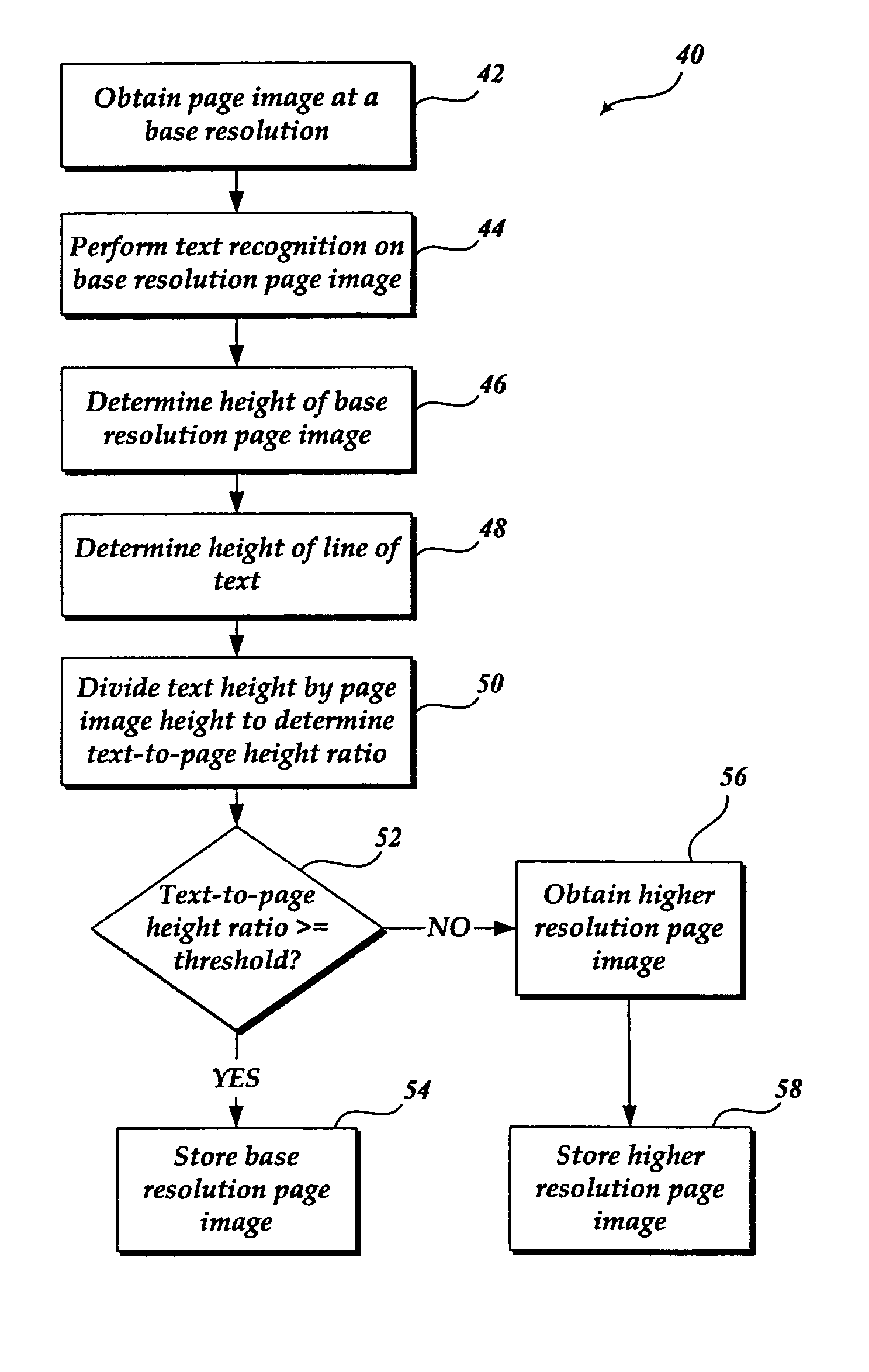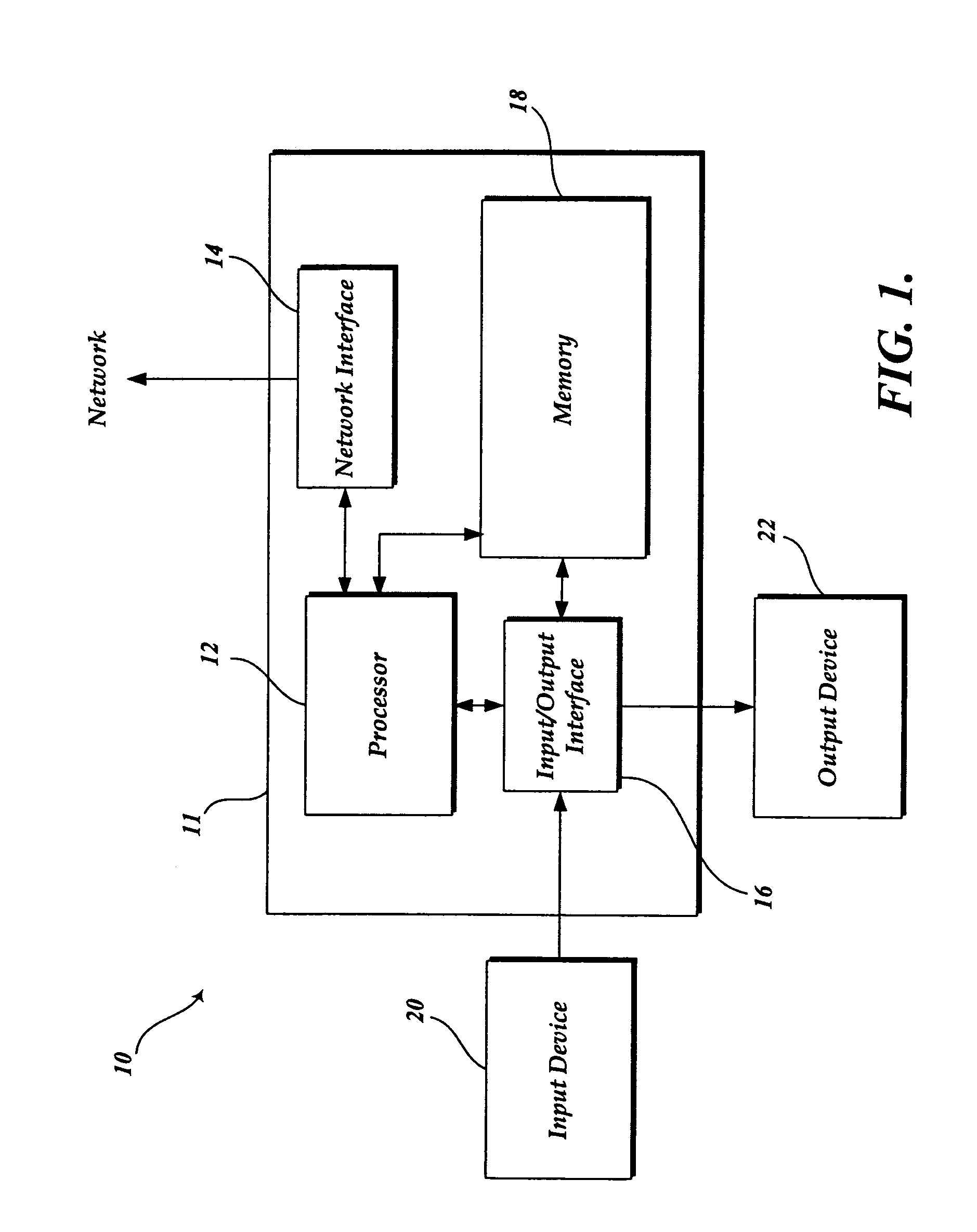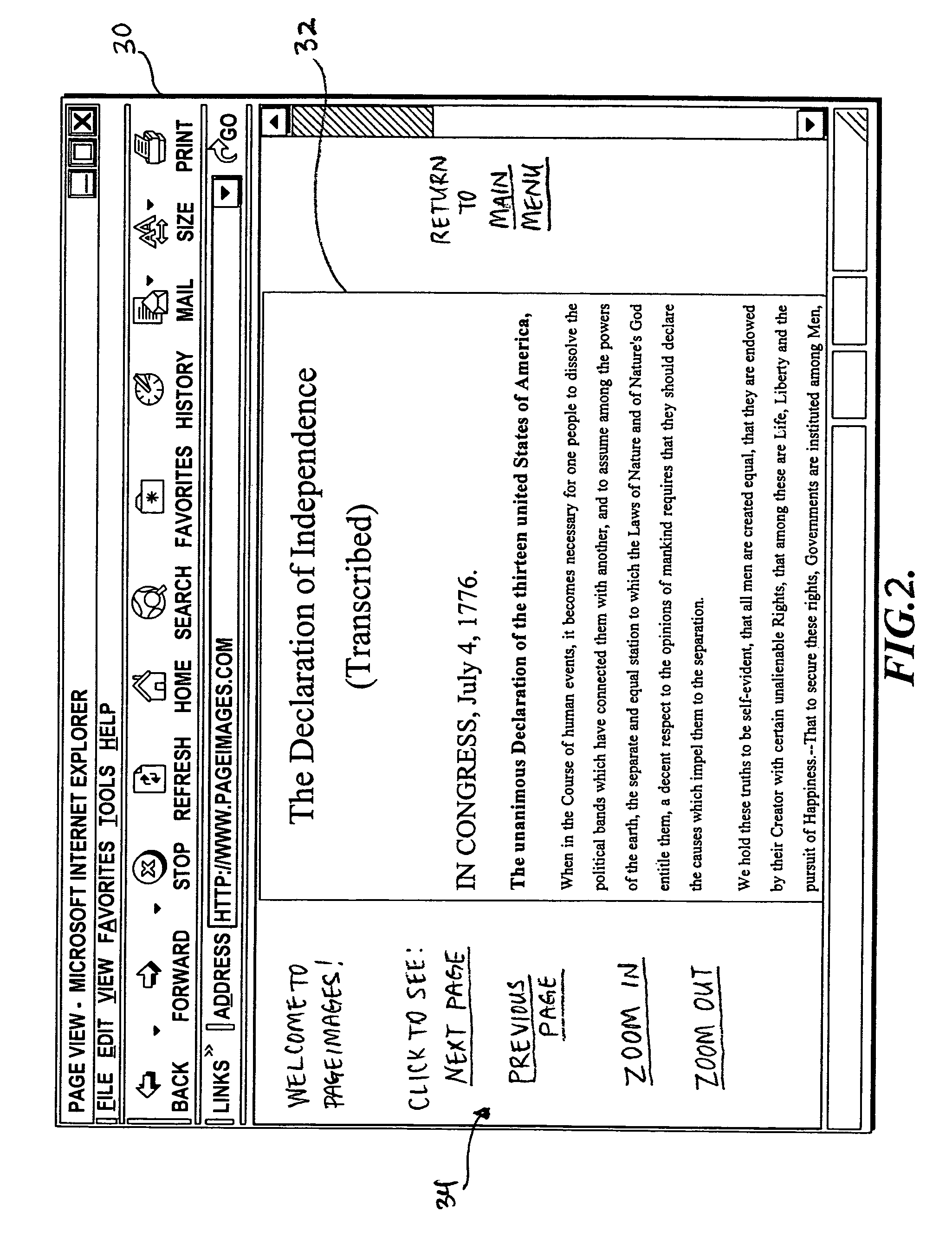Method and system for determining the legibility of text in an image
- Summary
- Abstract
- Description
- Claims
- Application Information
AI Technical Summary
Benefits of technology
Problems solved by technology
Method used
Image
Examples
Embodiment Construction
[0024]The present invention is directed to a method and system that determines the legibility of text in an image of a page of content. The legibility of text in a page image is determined by comparing a measure of the text in the page image with a measure derived from the page image itself. In some embodiments, a test of legibility is performed by identifying a spatial dimension of a page image and comparing measures of text height and page image height in the identified spatial dimension. In other embodiments, a test of legibility is performed by calculating a measure of word density in the page image and comparing the word density to a file size of the page image that has been compressed using an image compression algorithm. The following detailed description provides several exemplary implementations of the invention. Although specific flow diagrams and system configurations are illustrated, it should be understood that the examples provided are not exhaustive and do not limit t...
PUM
 Login to View More
Login to View More Abstract
Description
Claims
Application Information
 Login to View More
Login to View More - R&D
- Intellectual Property
- Life Sciences
- Materials
- Tech Scout
- Unparalleled Data Quality
- Higher Quality Content
- 60% Fewer Hallucinations
Browse by: Latest US Patents, China's latest patents, Technical Efficacy Thesaurus, Application Domain, Technology Topic, Popular Technical Reports.
© 2025 PatSnap. All rights reserved.Legal|Privacy policy|Modern Slavery Act Transparency Statement|Sitemap|About US| Contact US: help@patsnap.com



